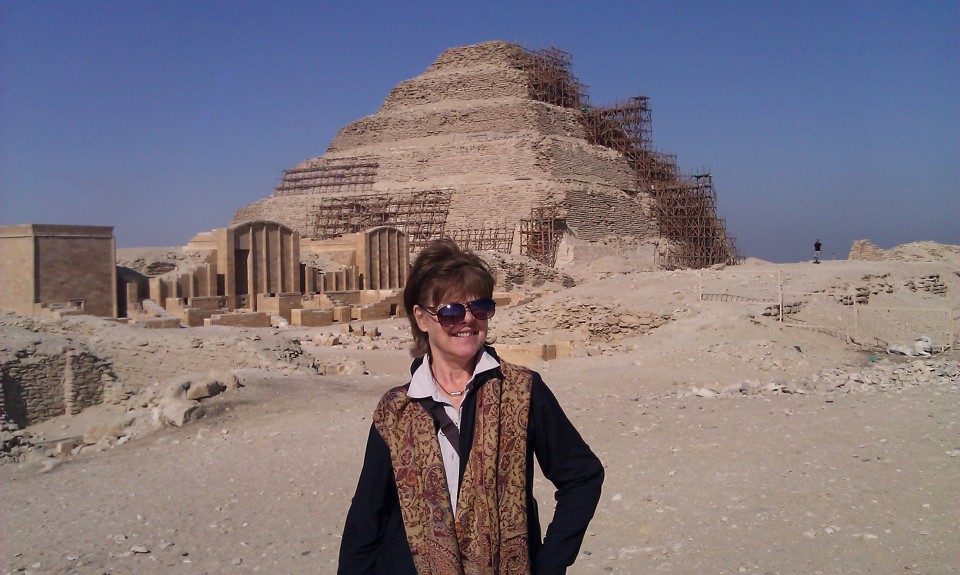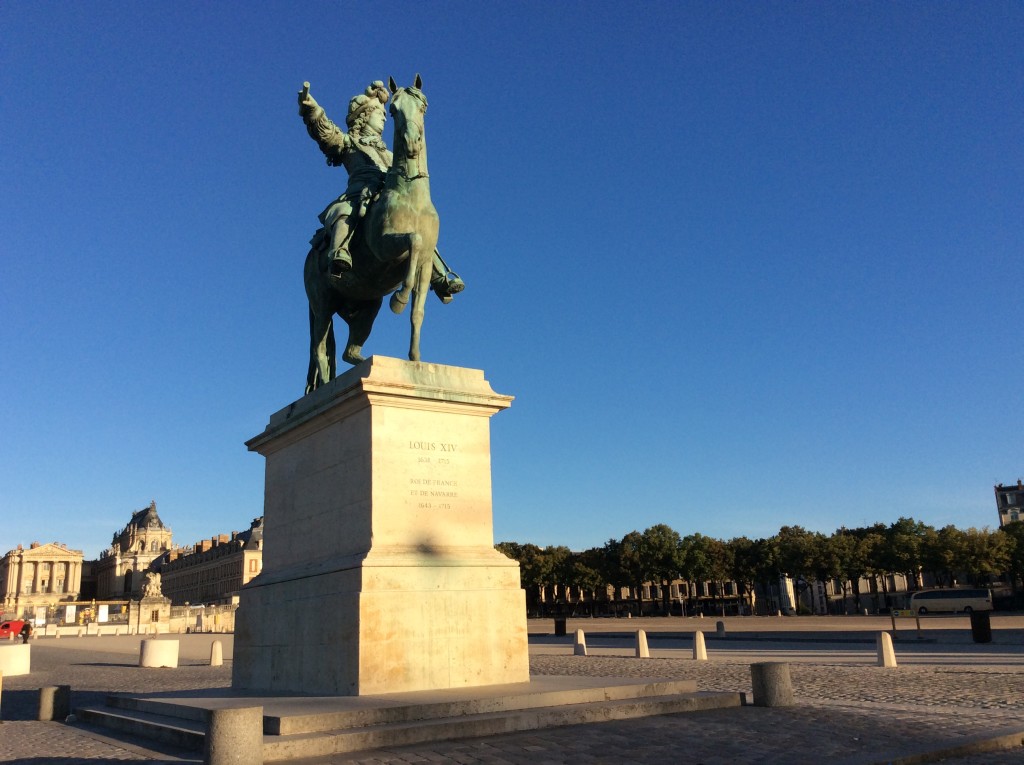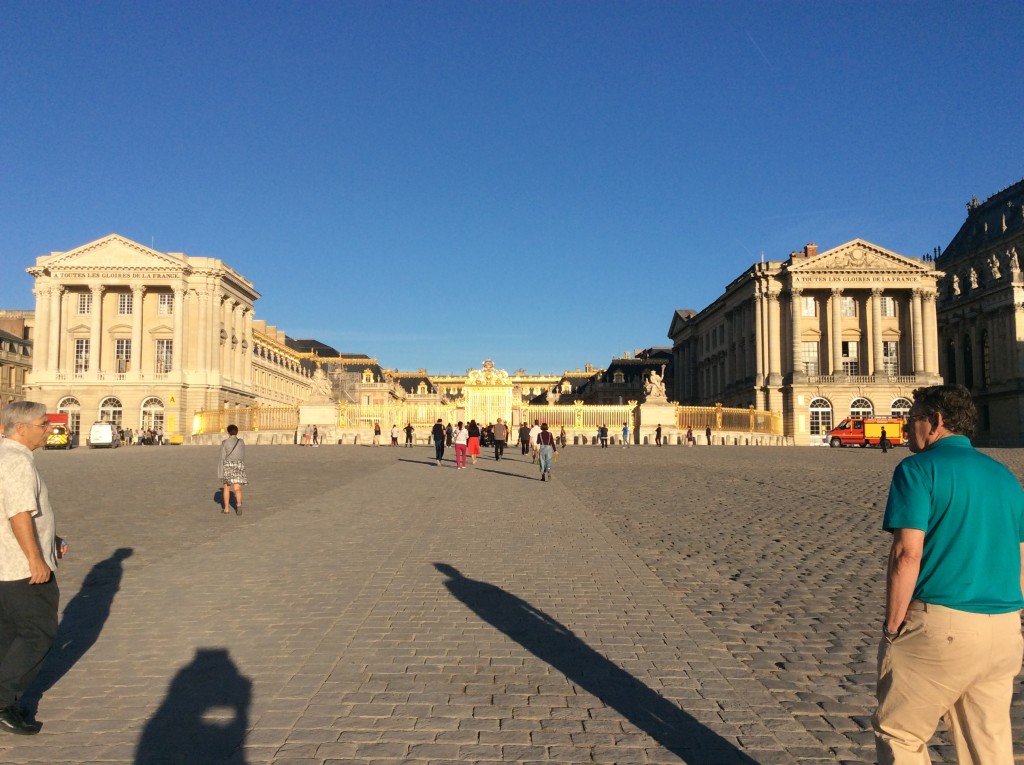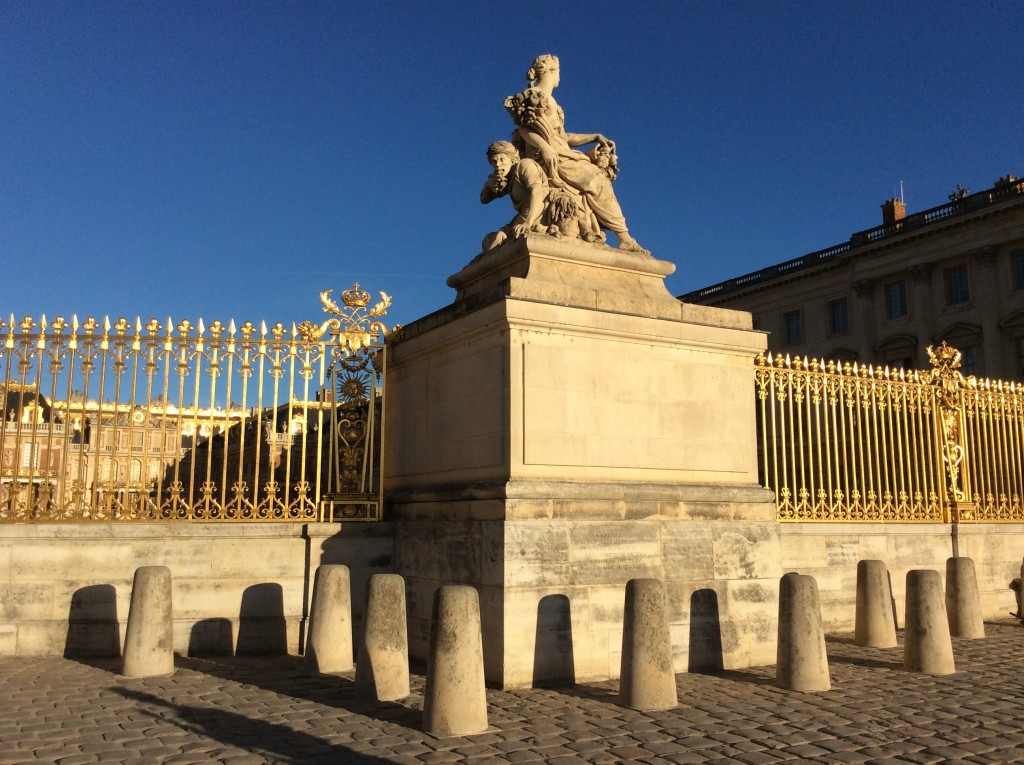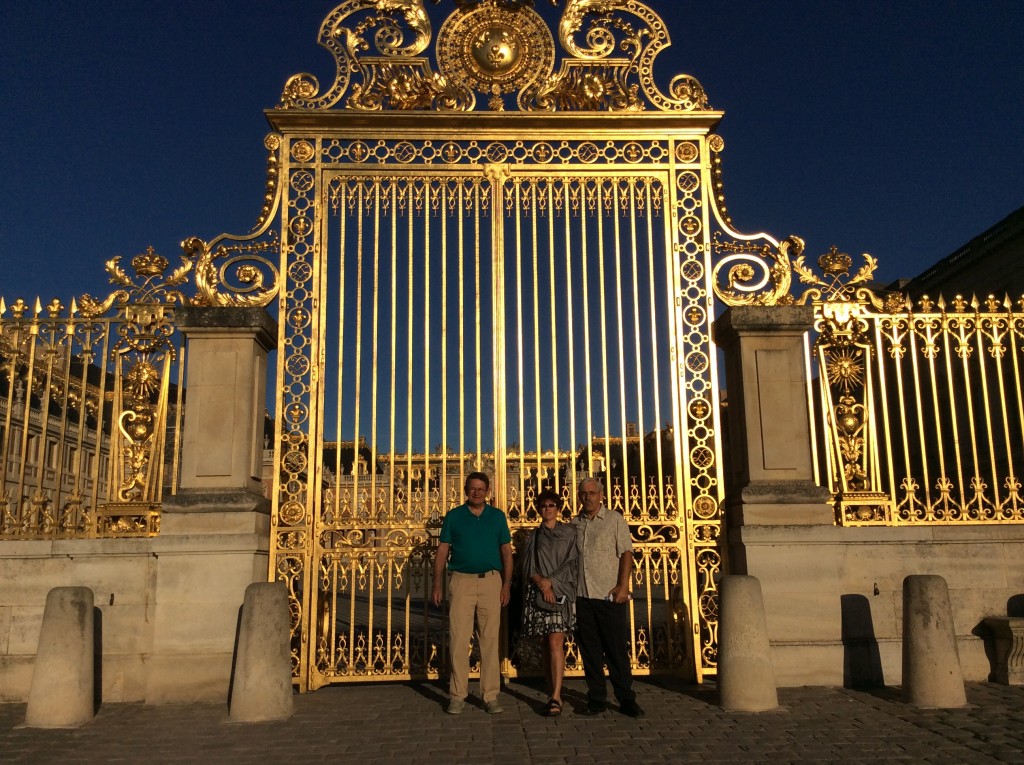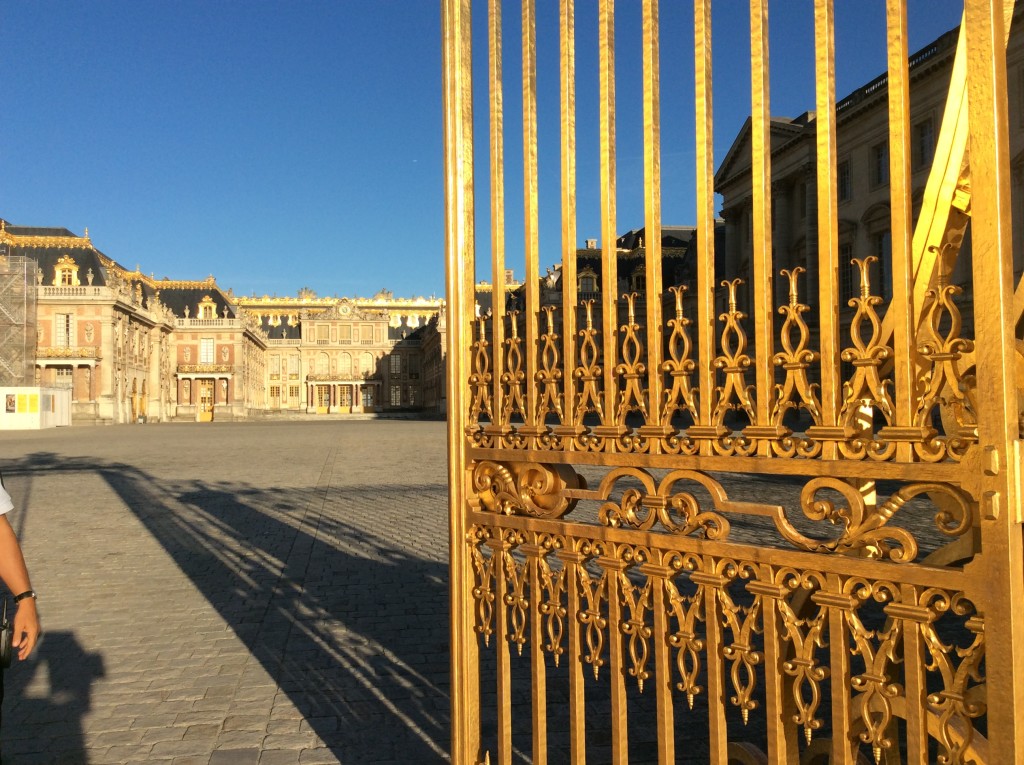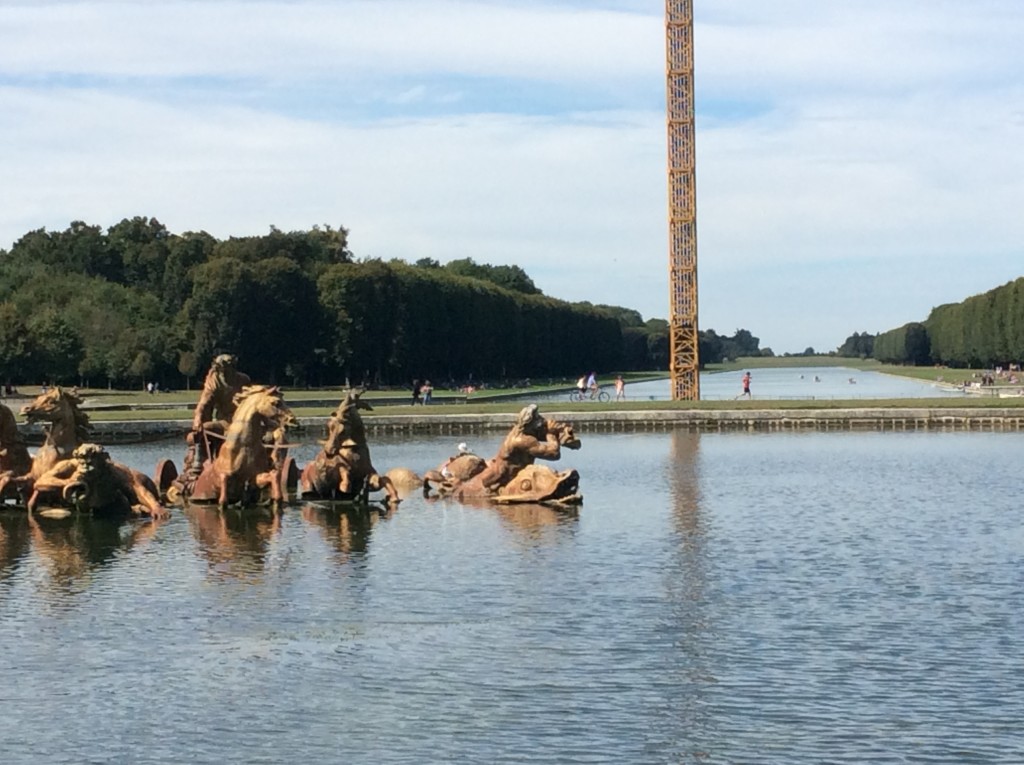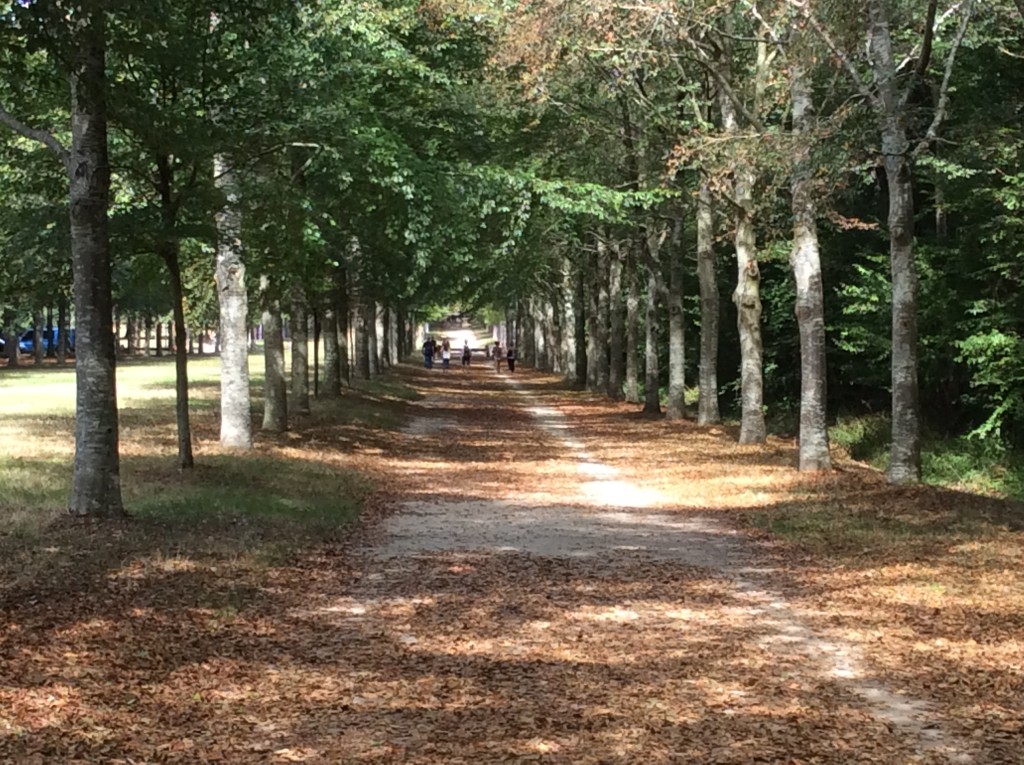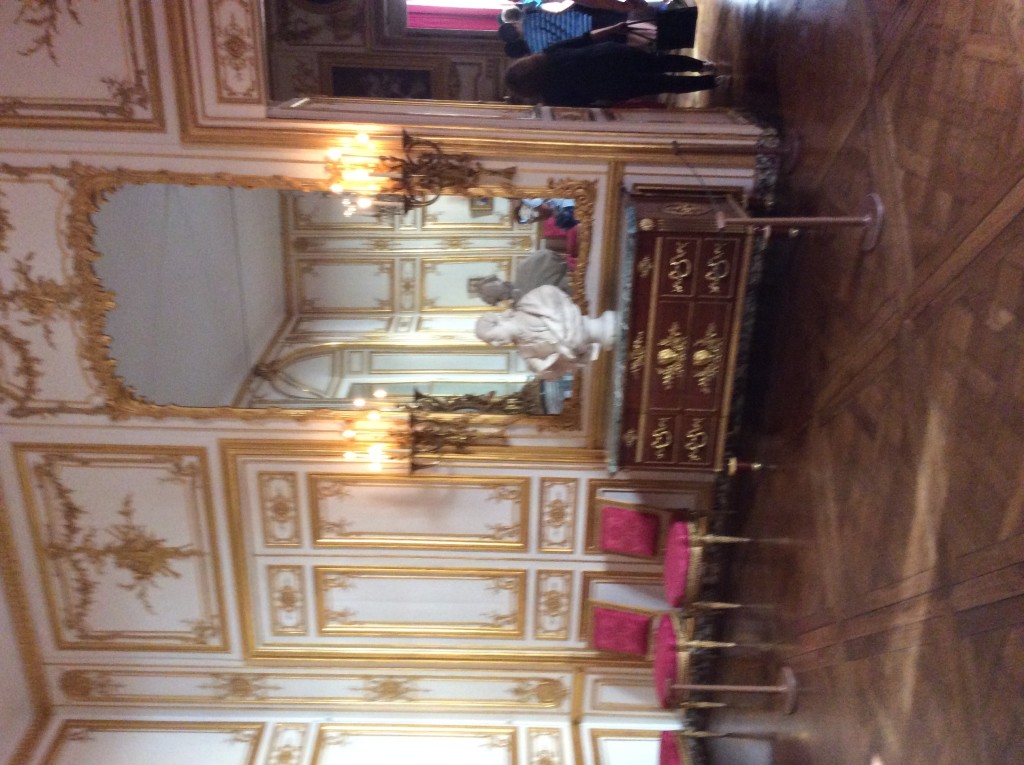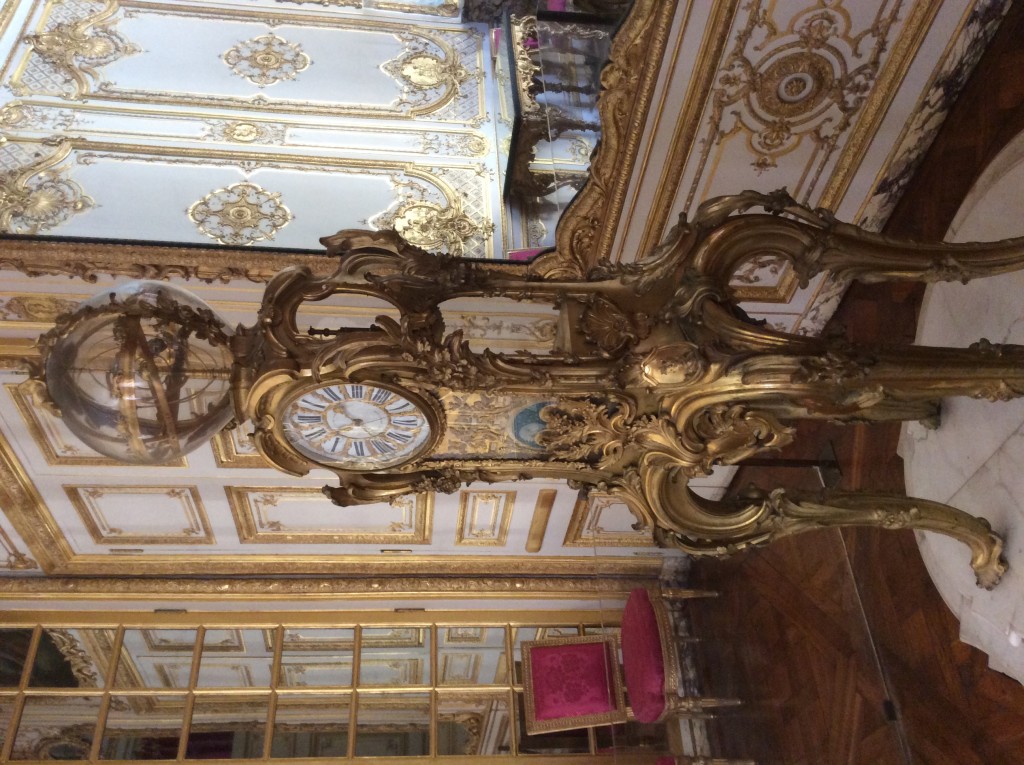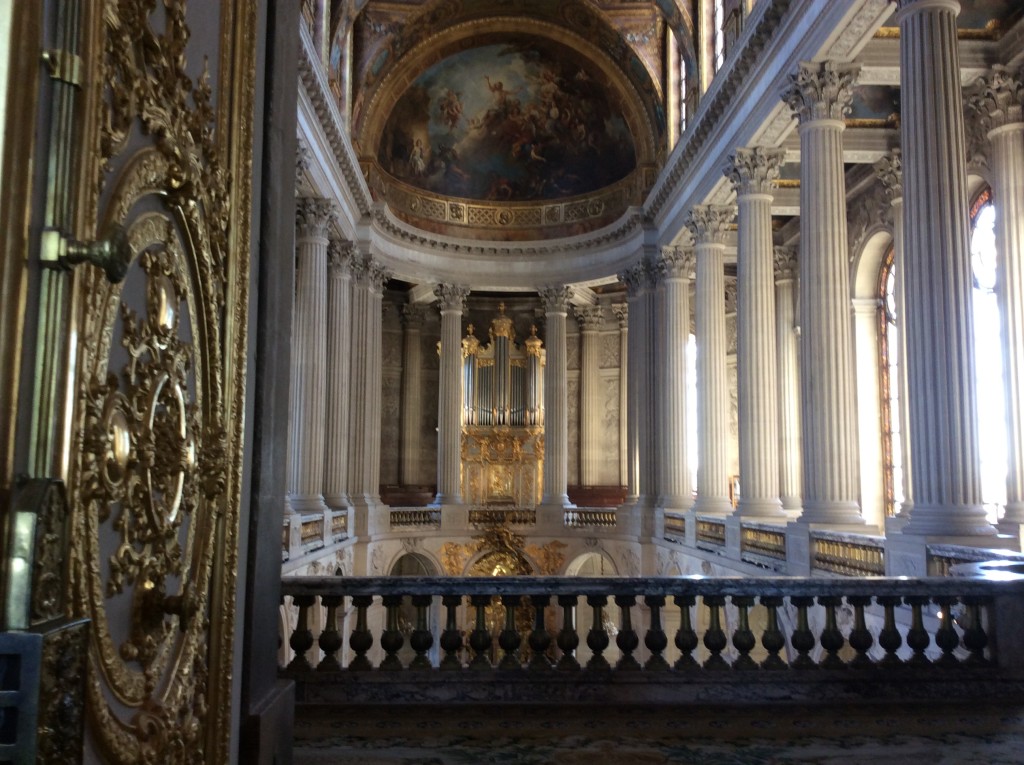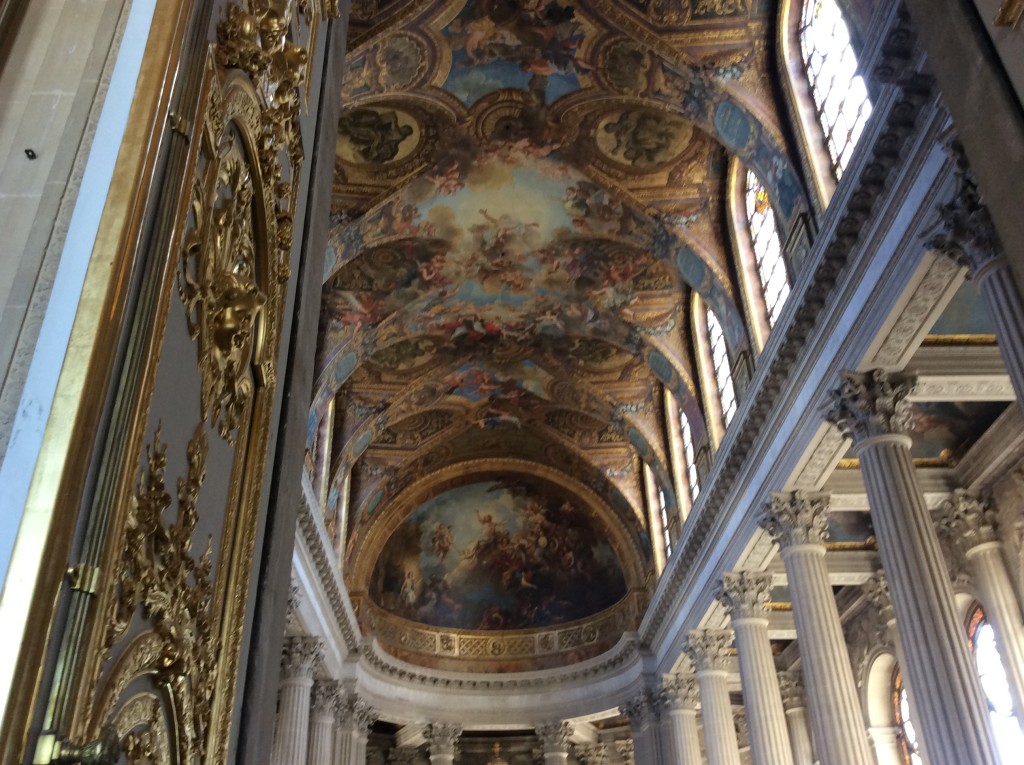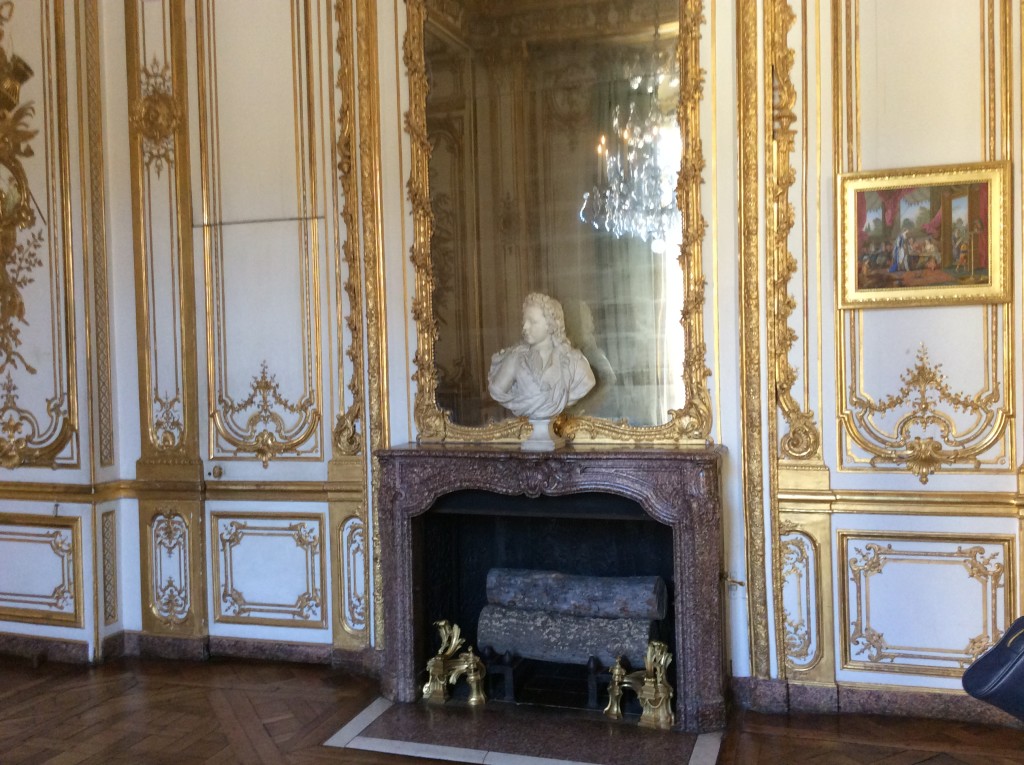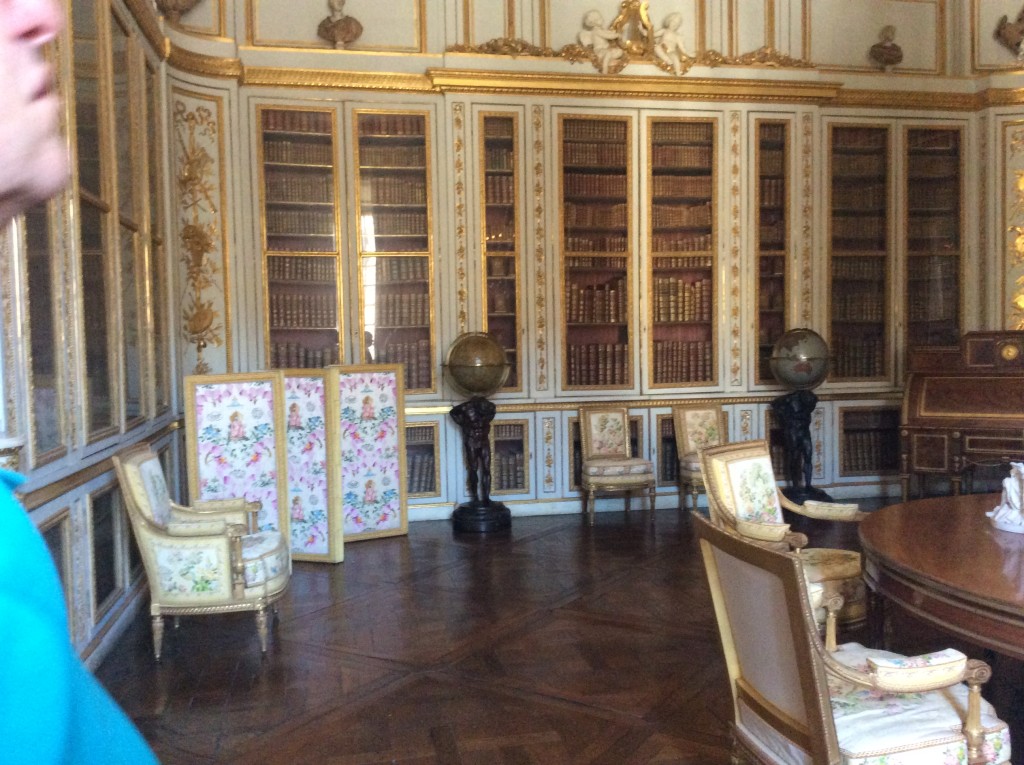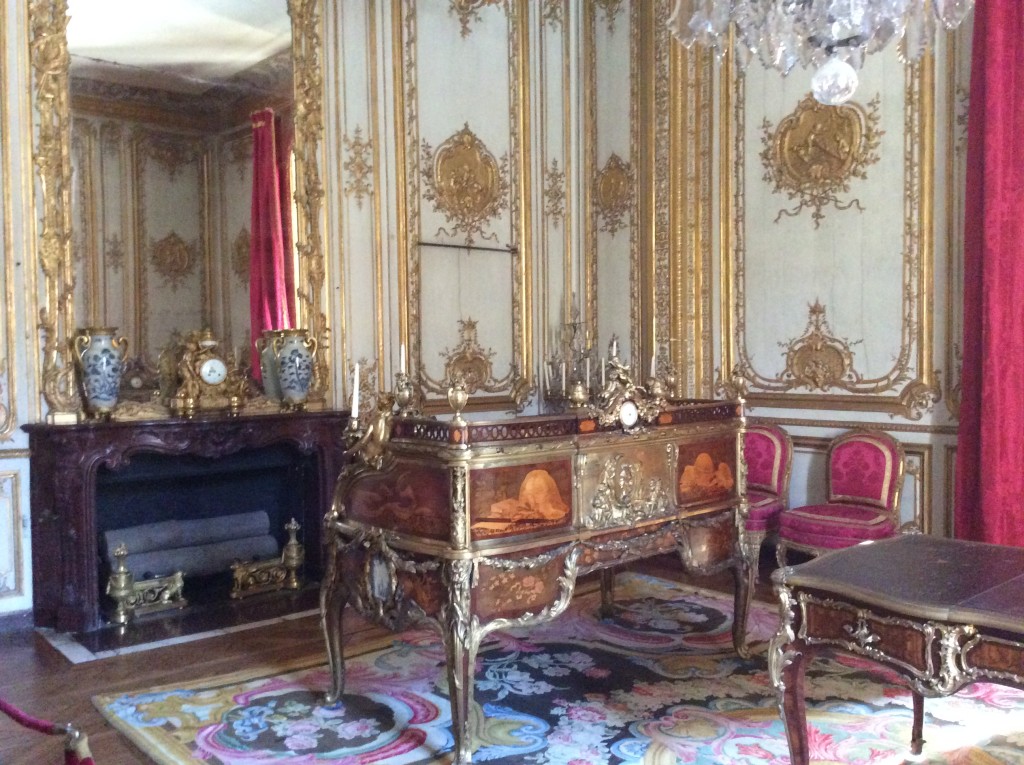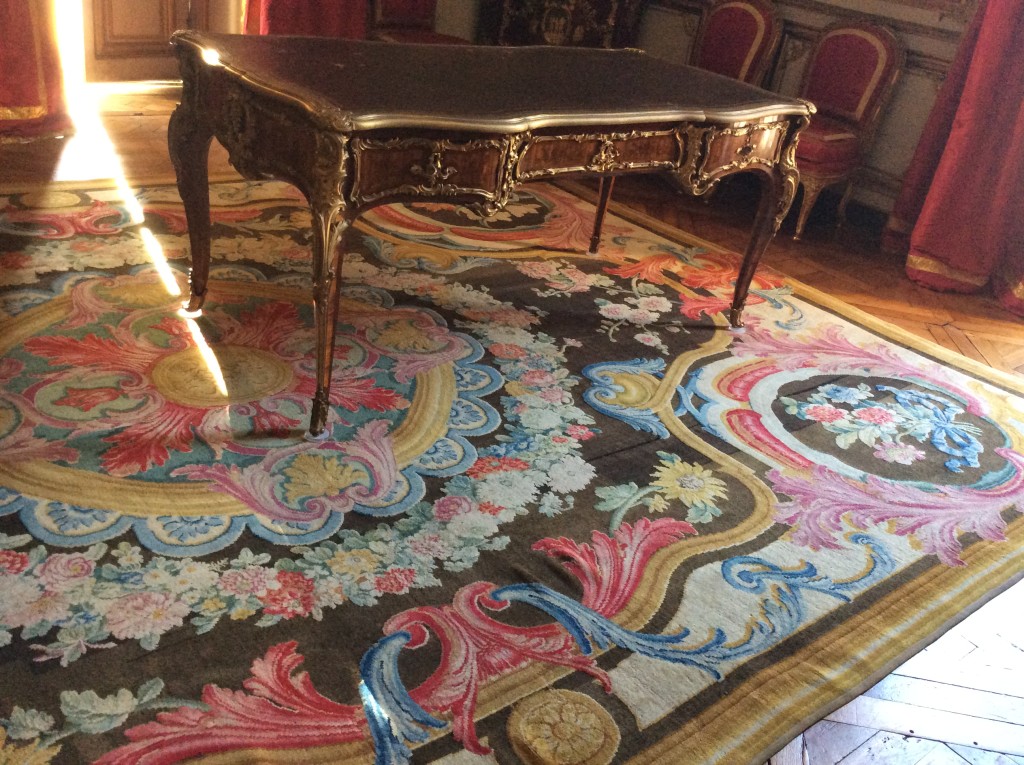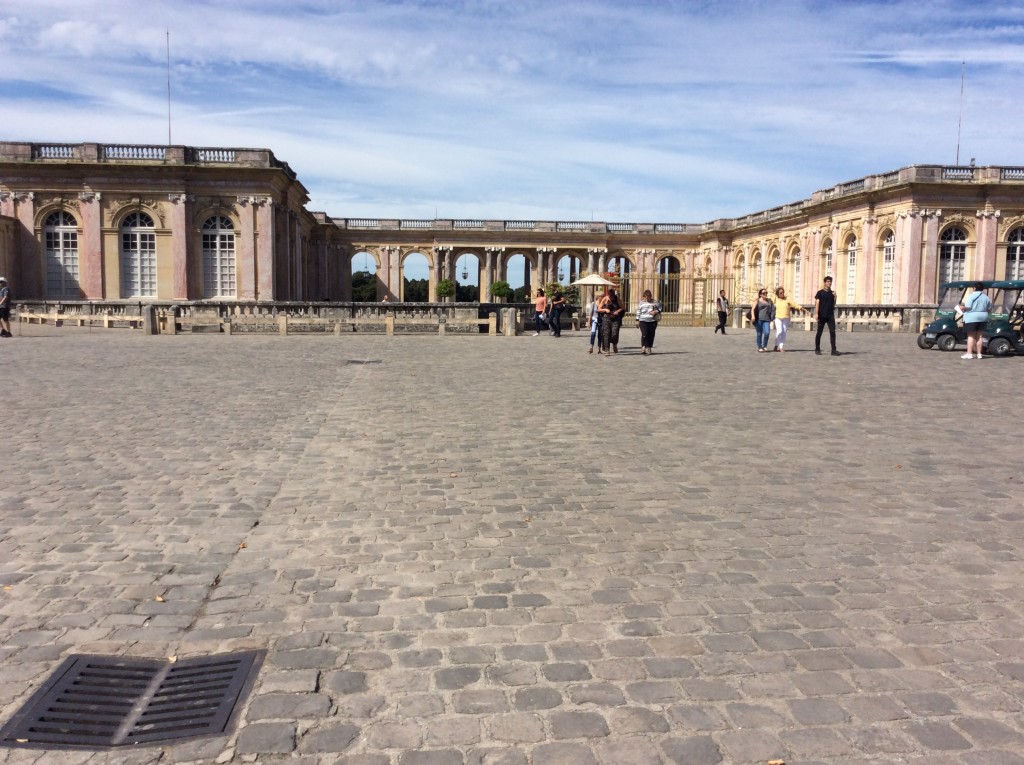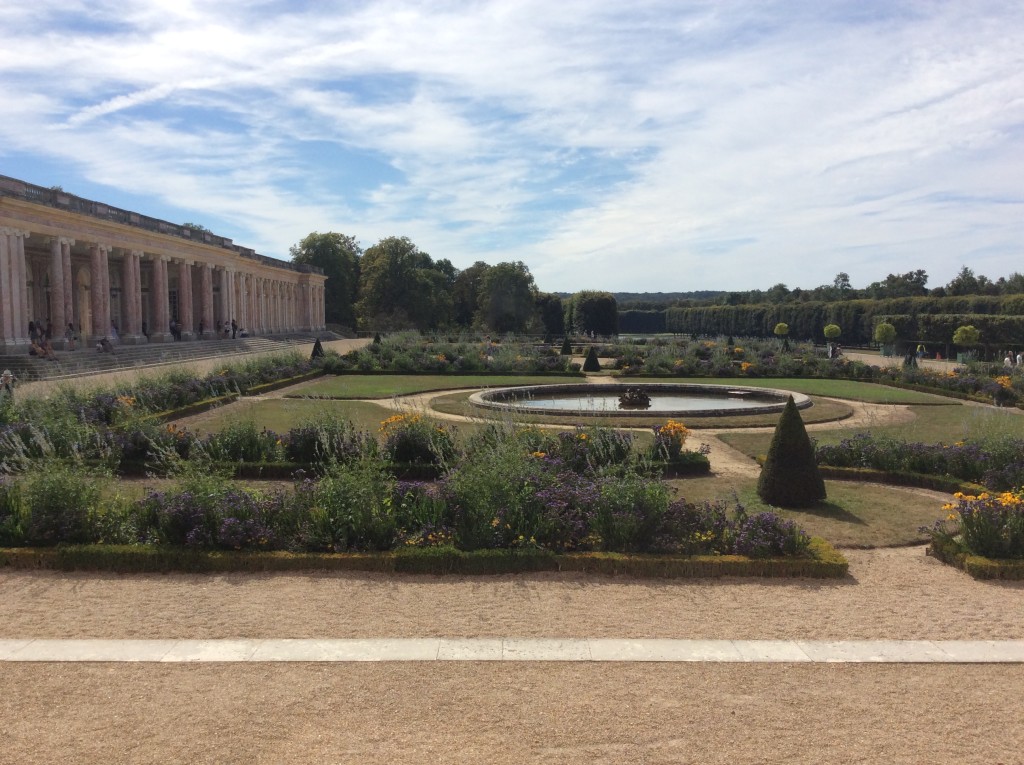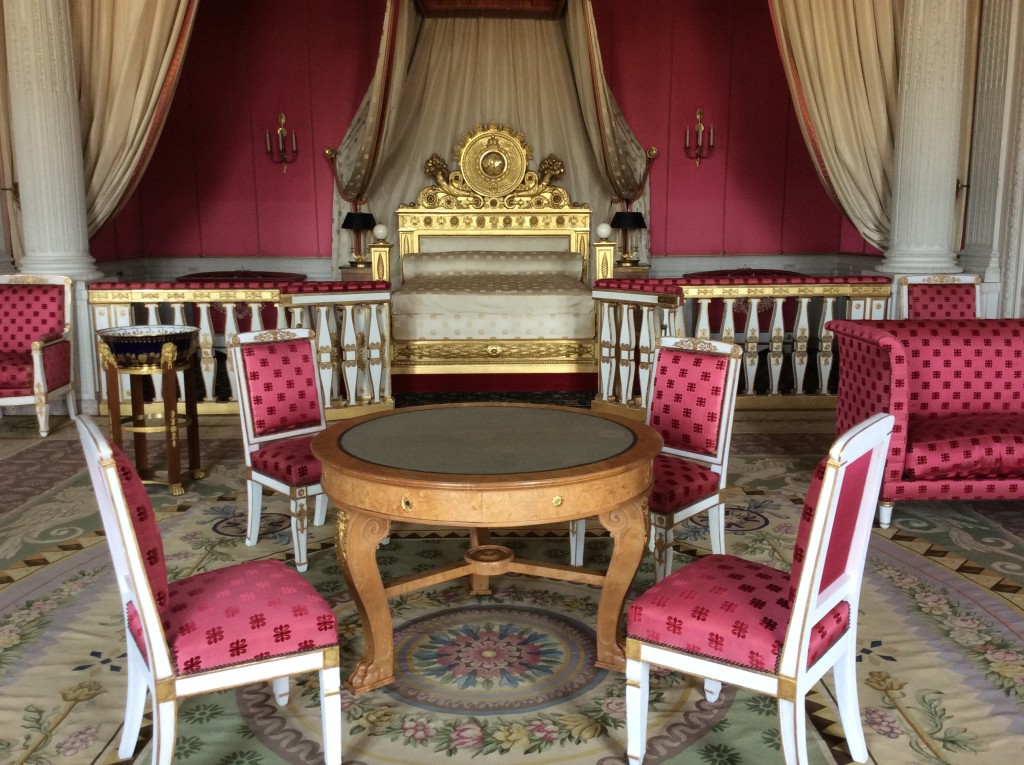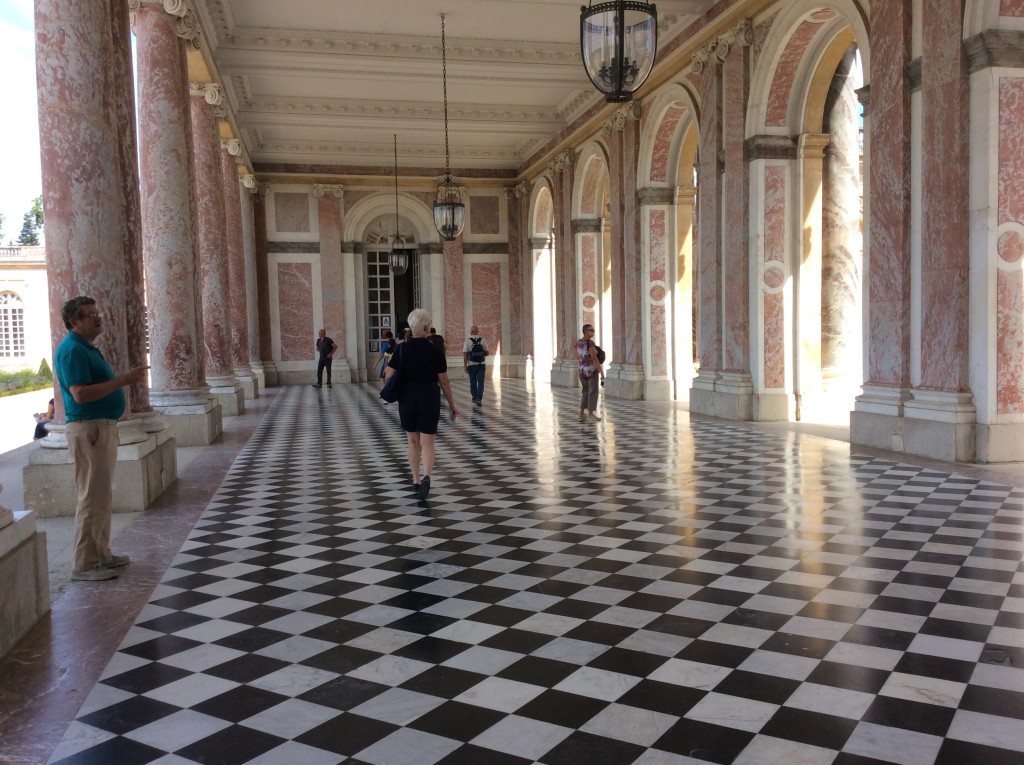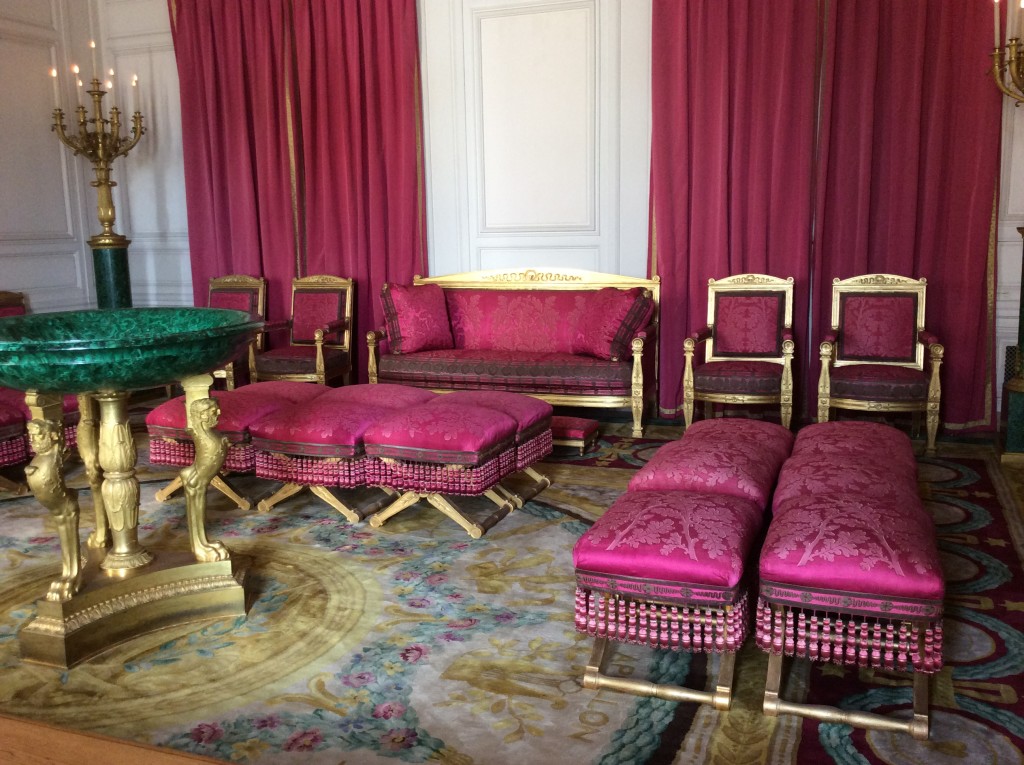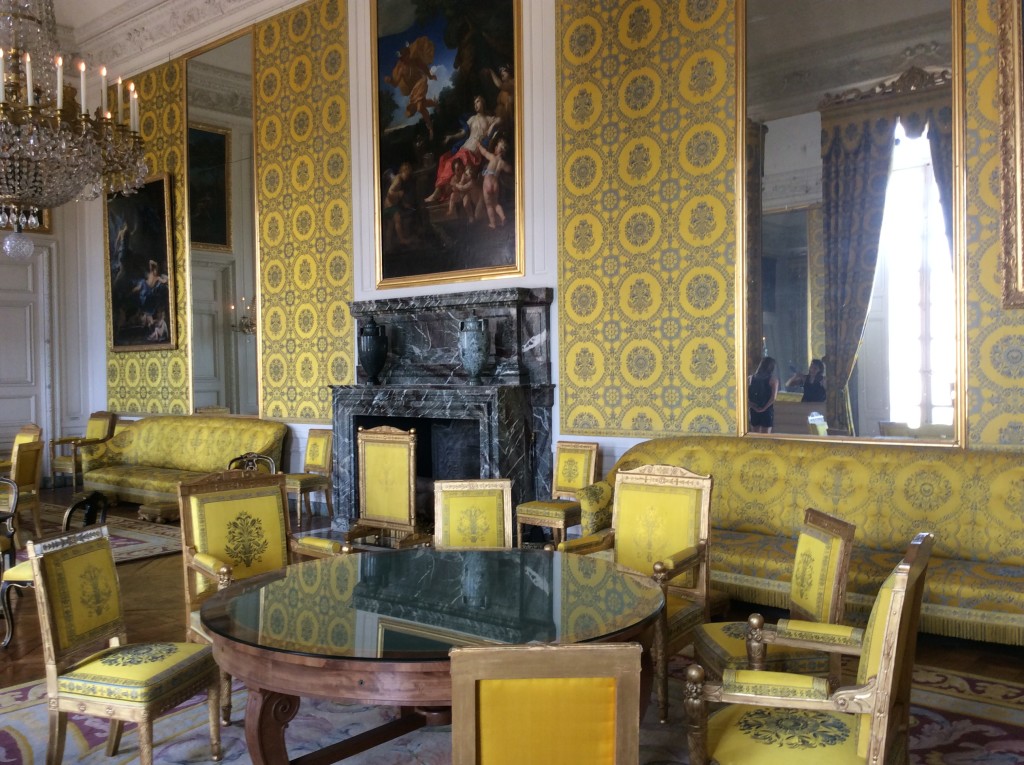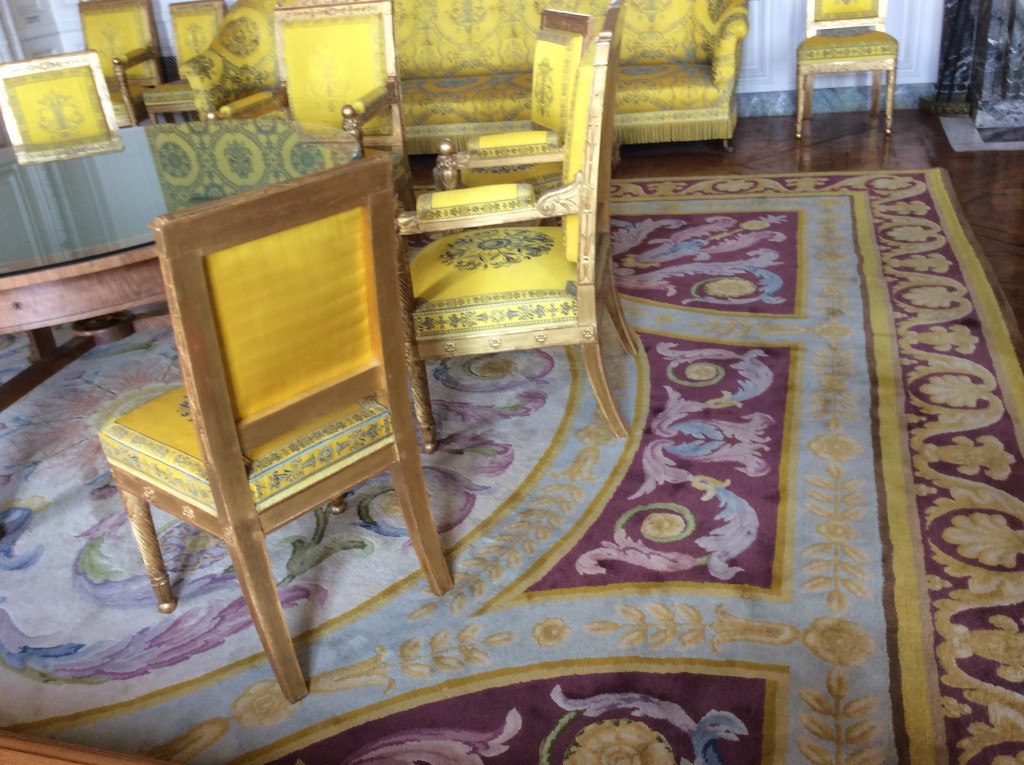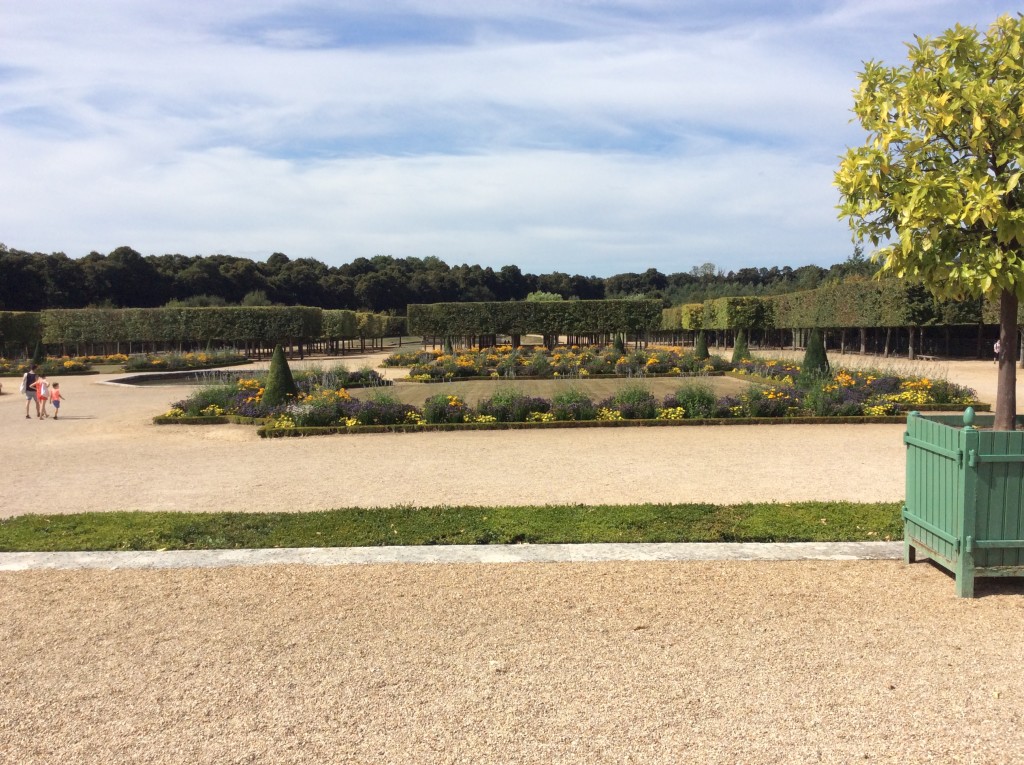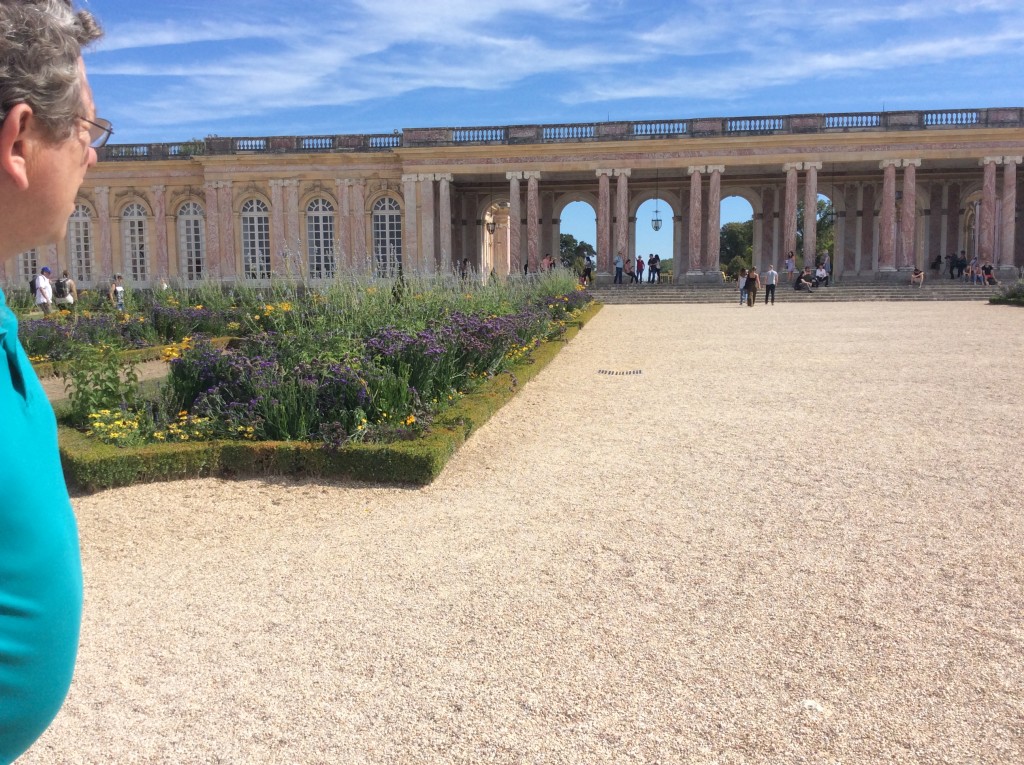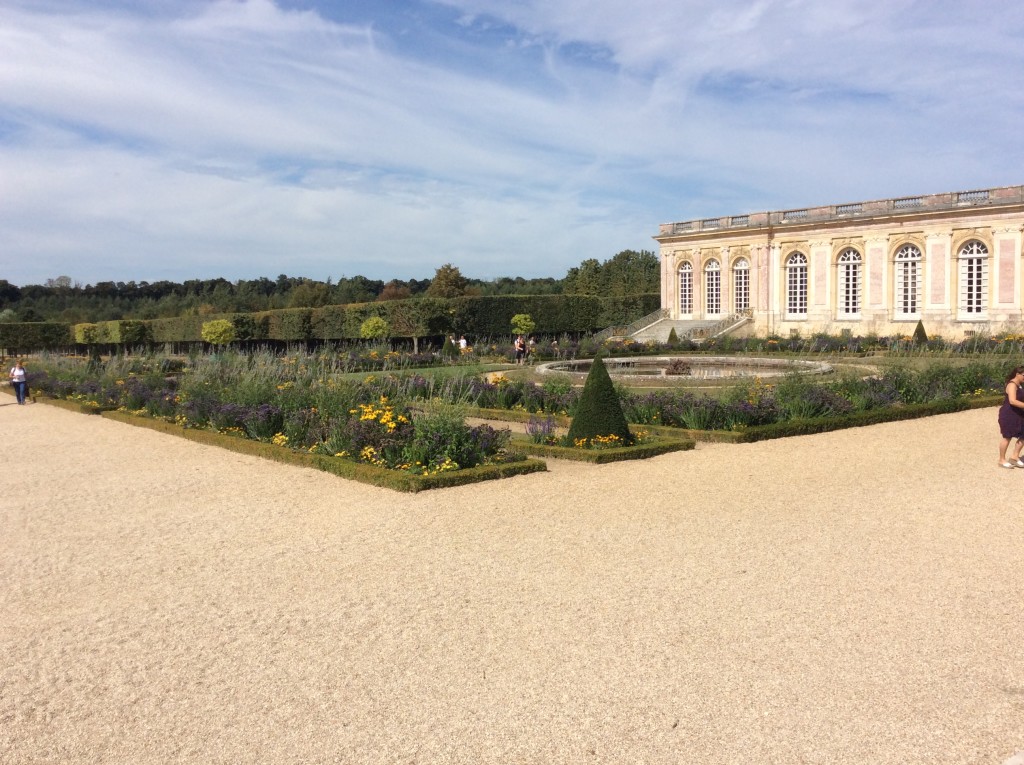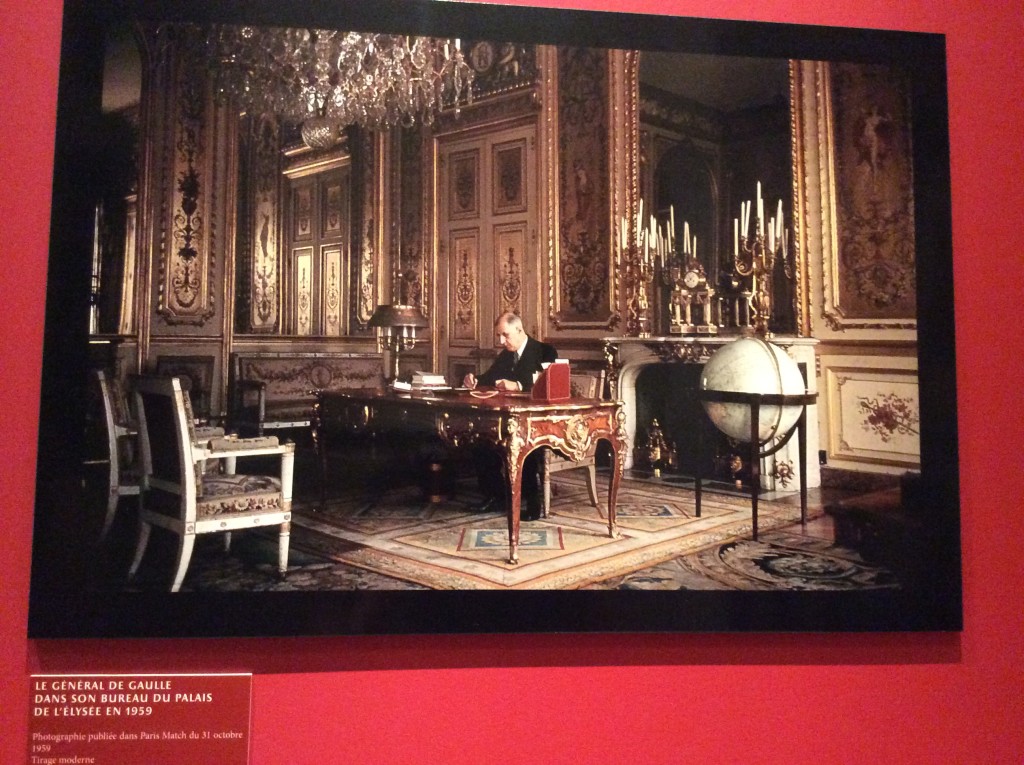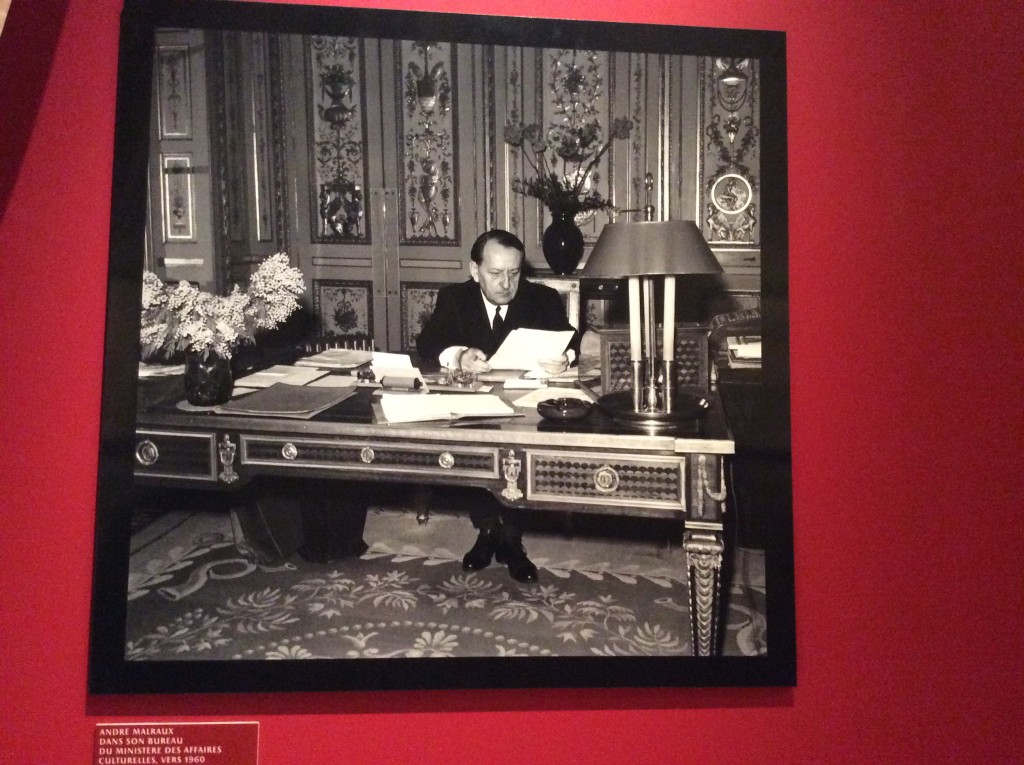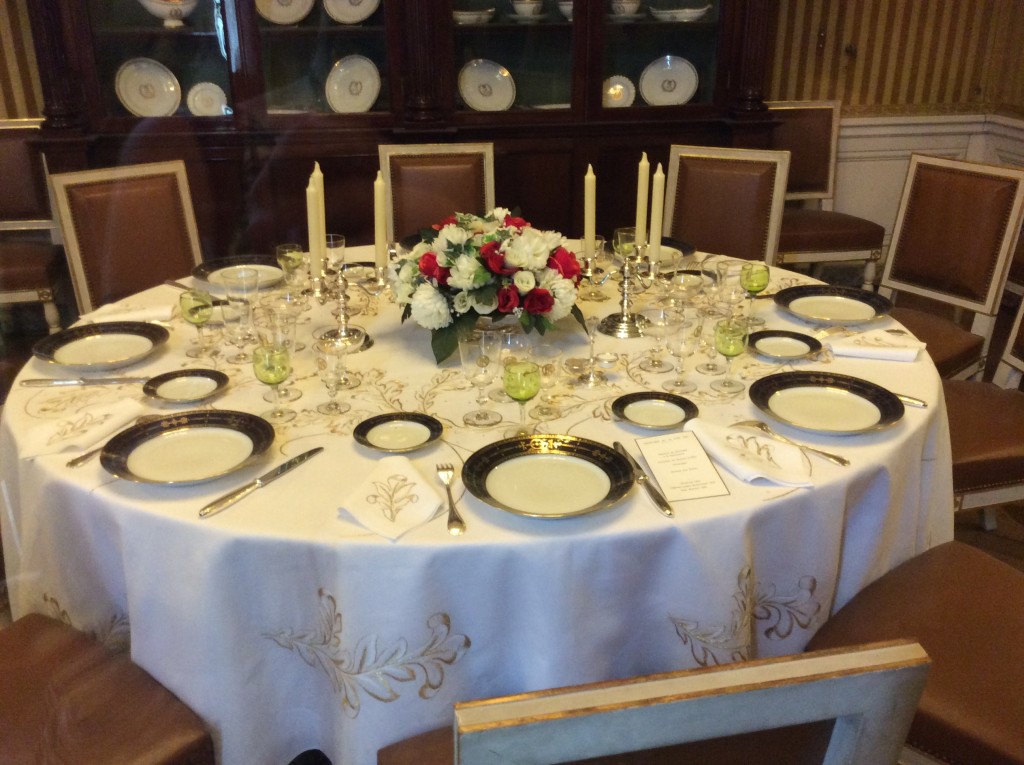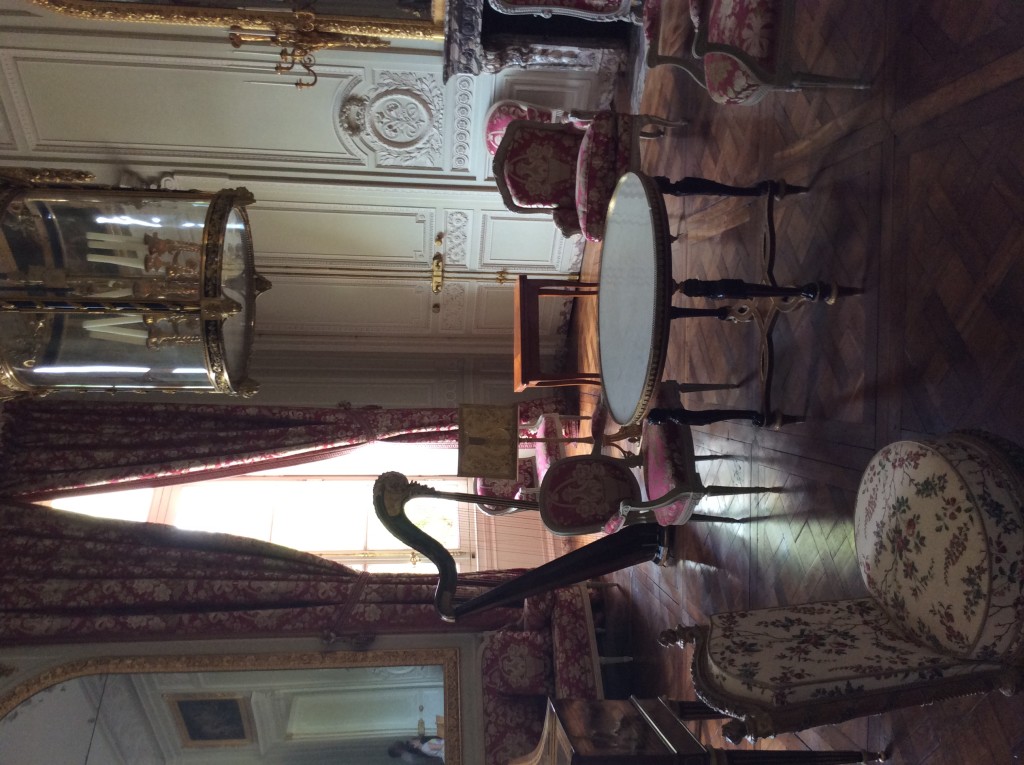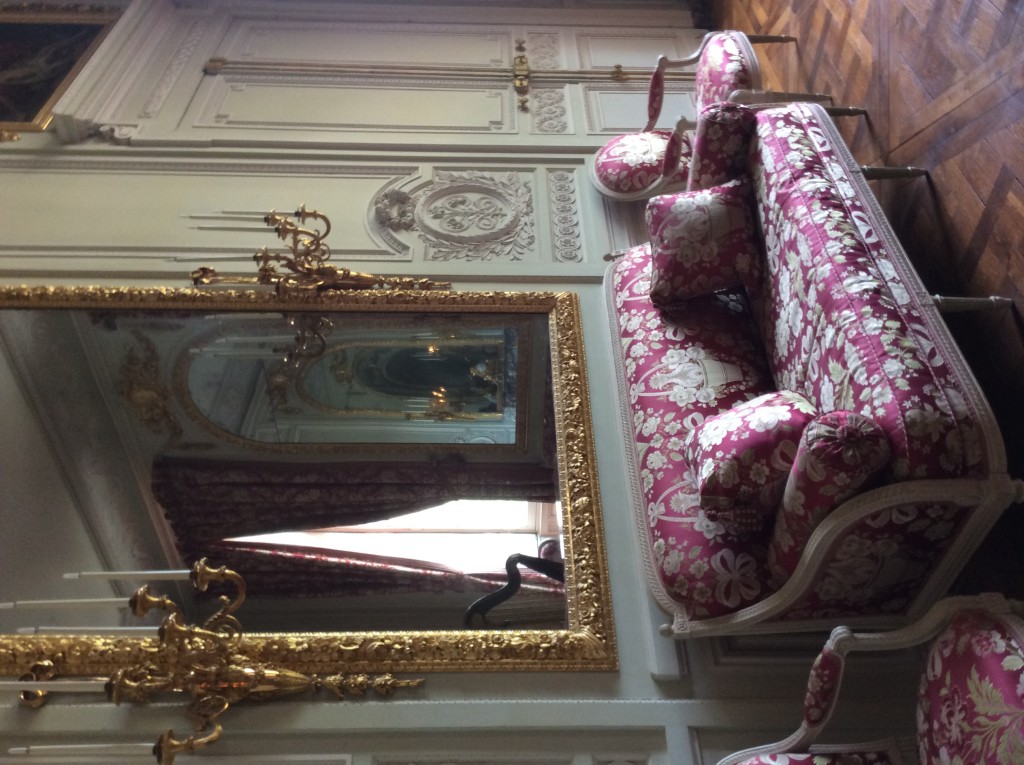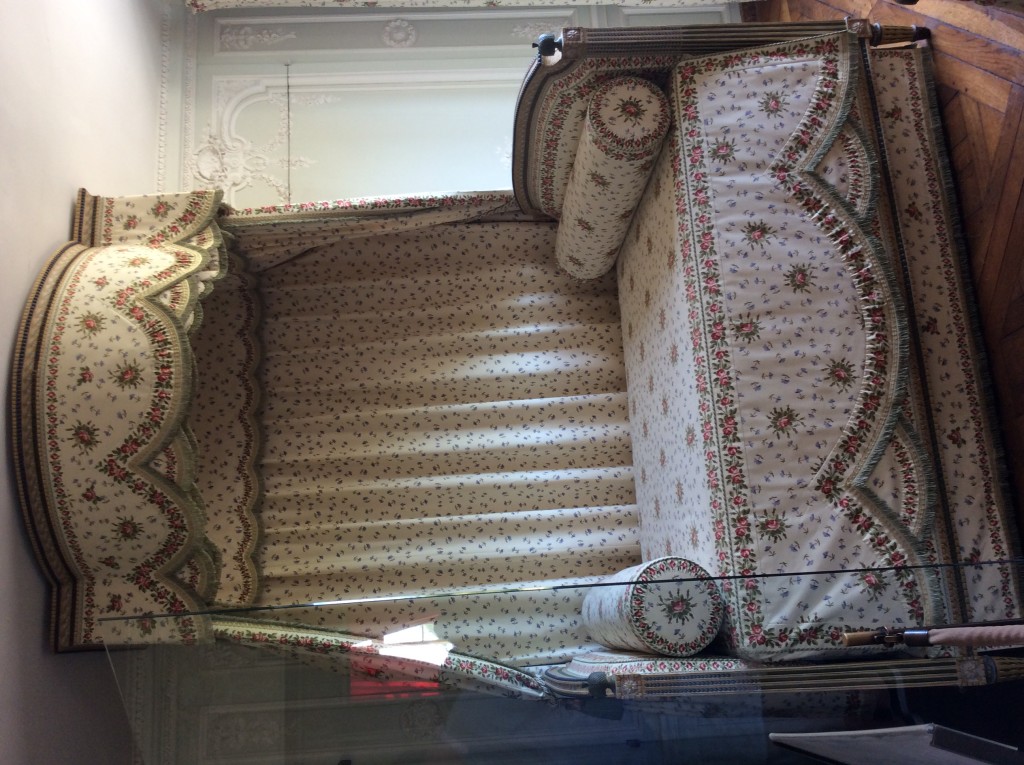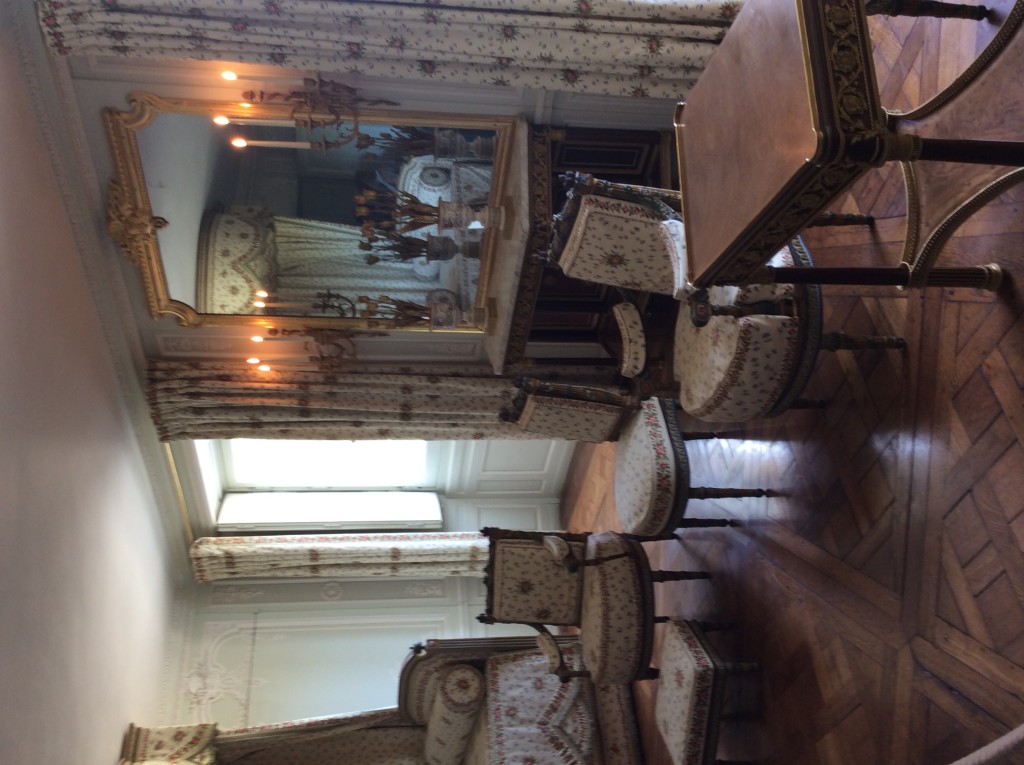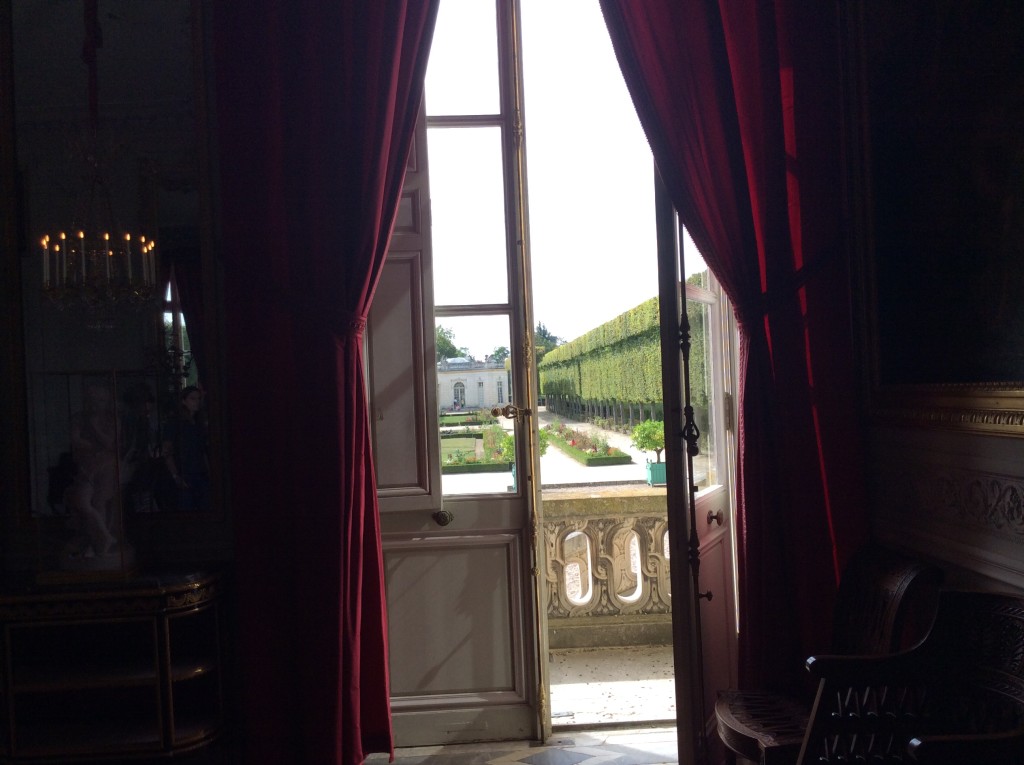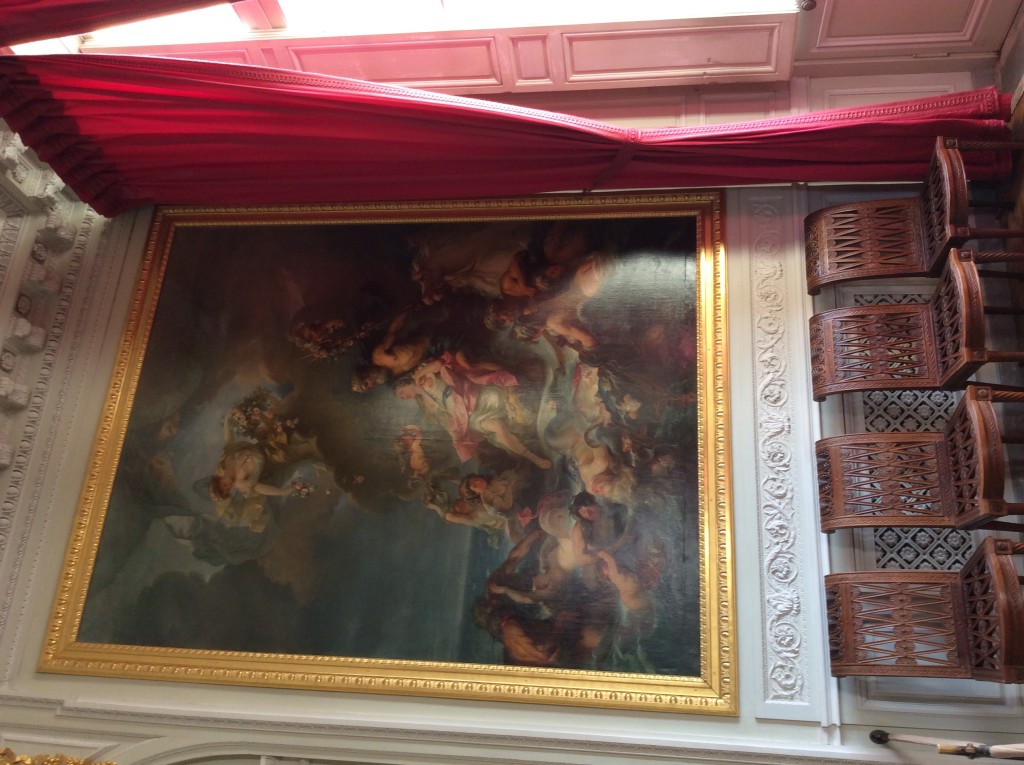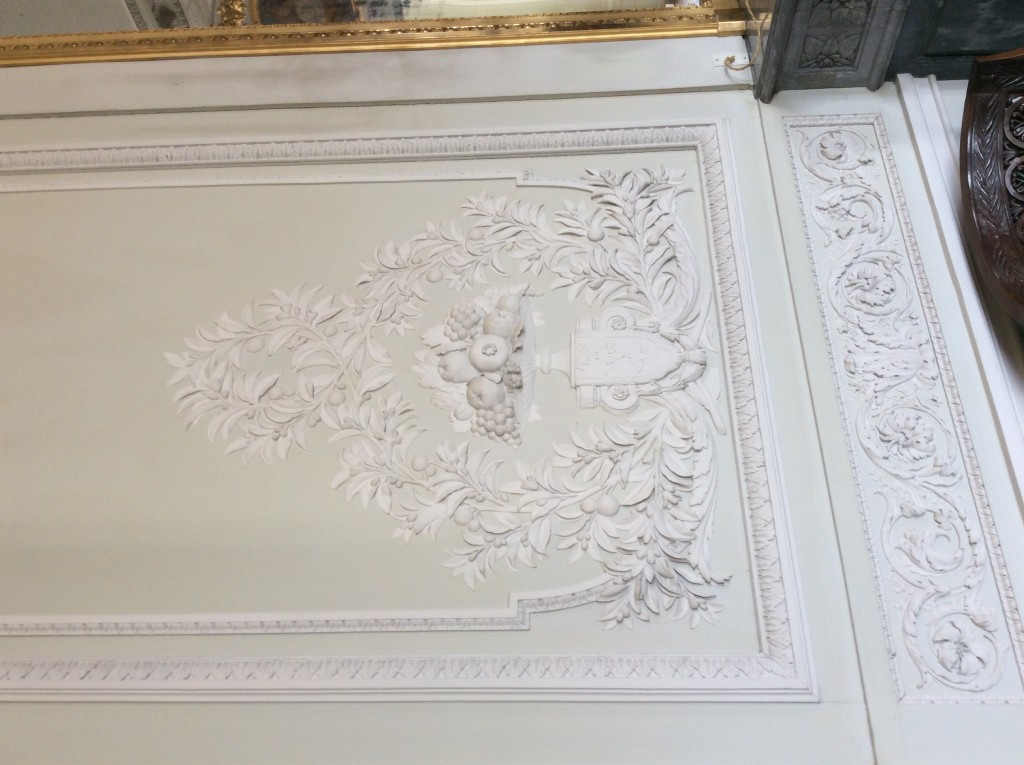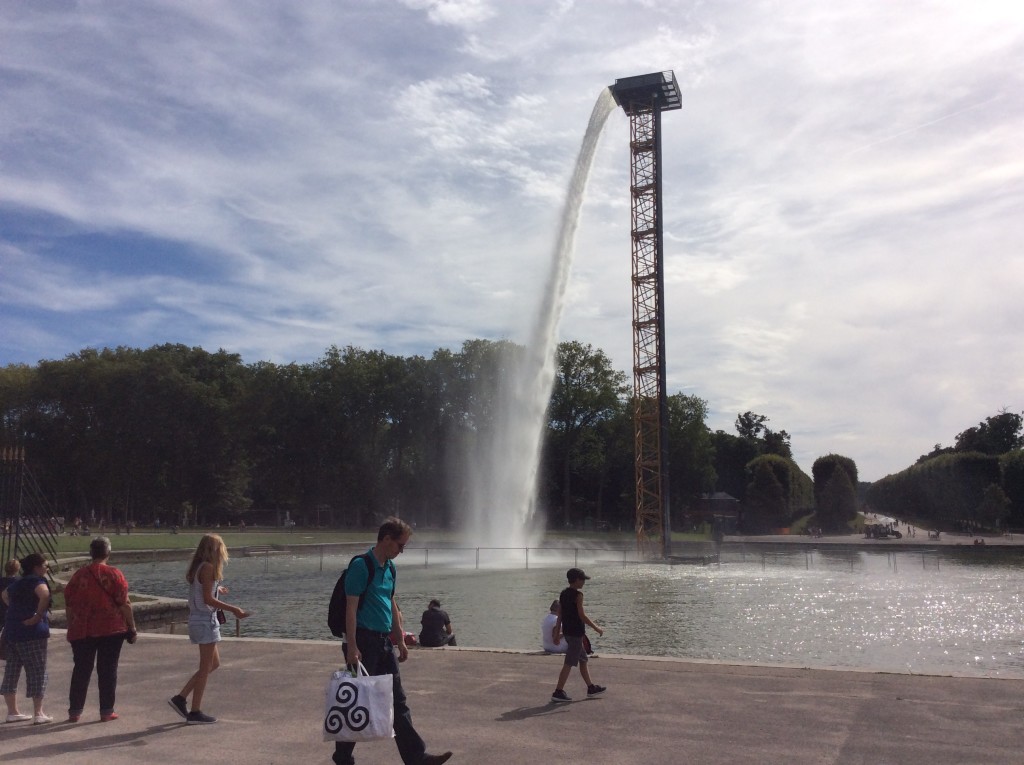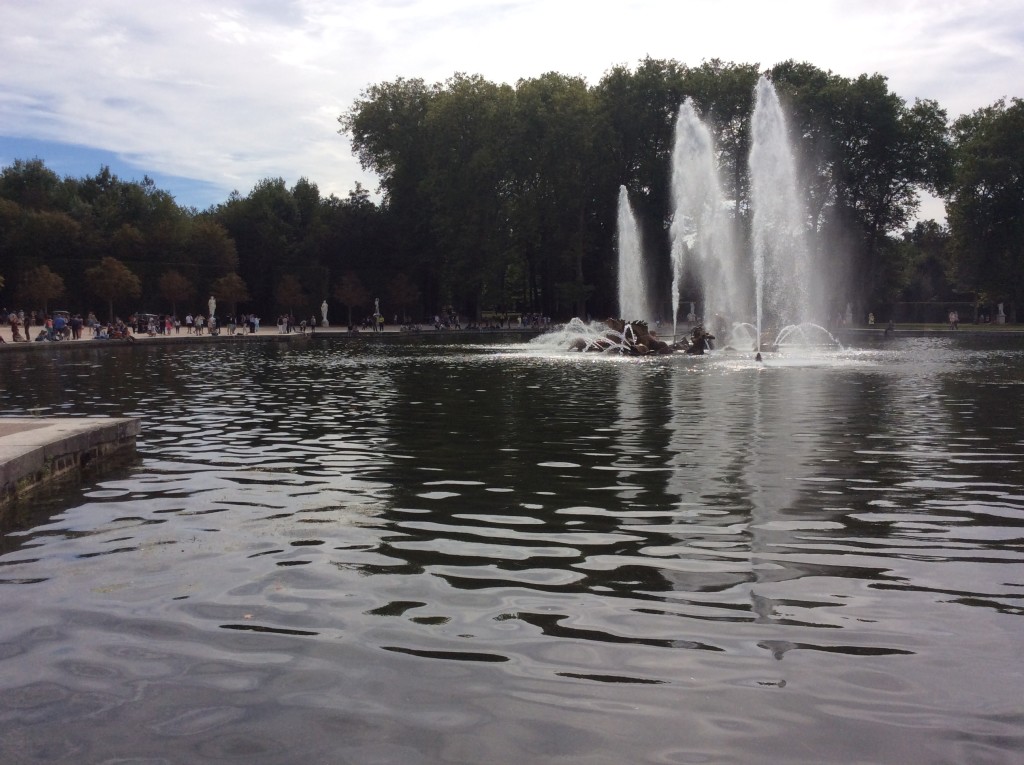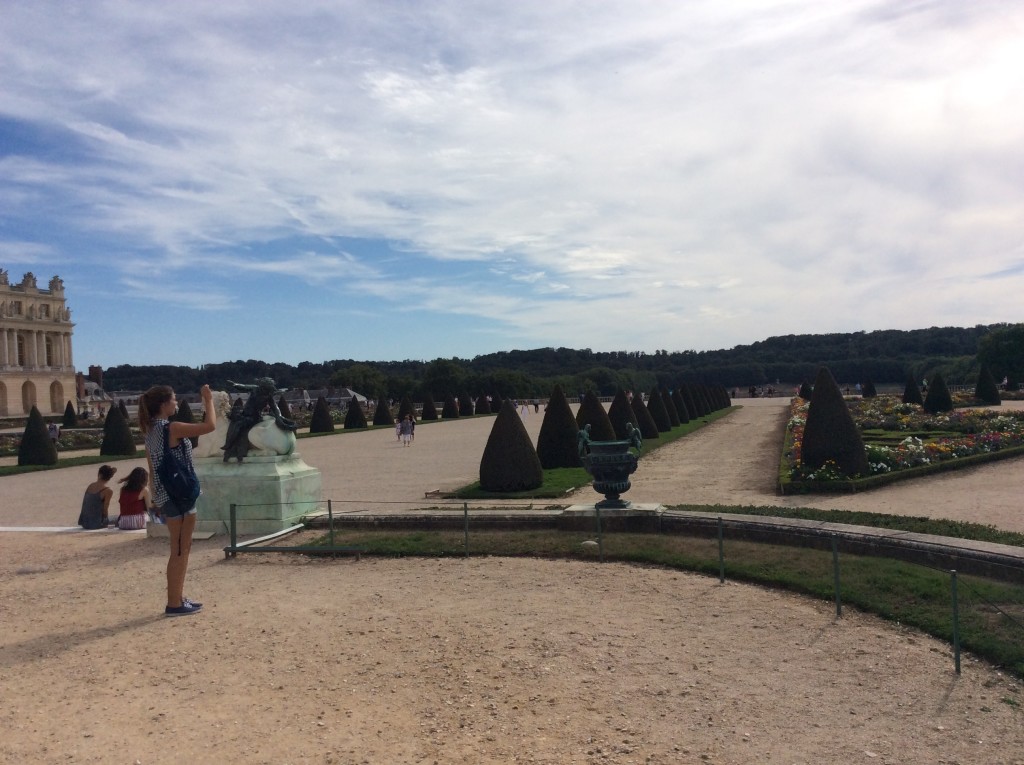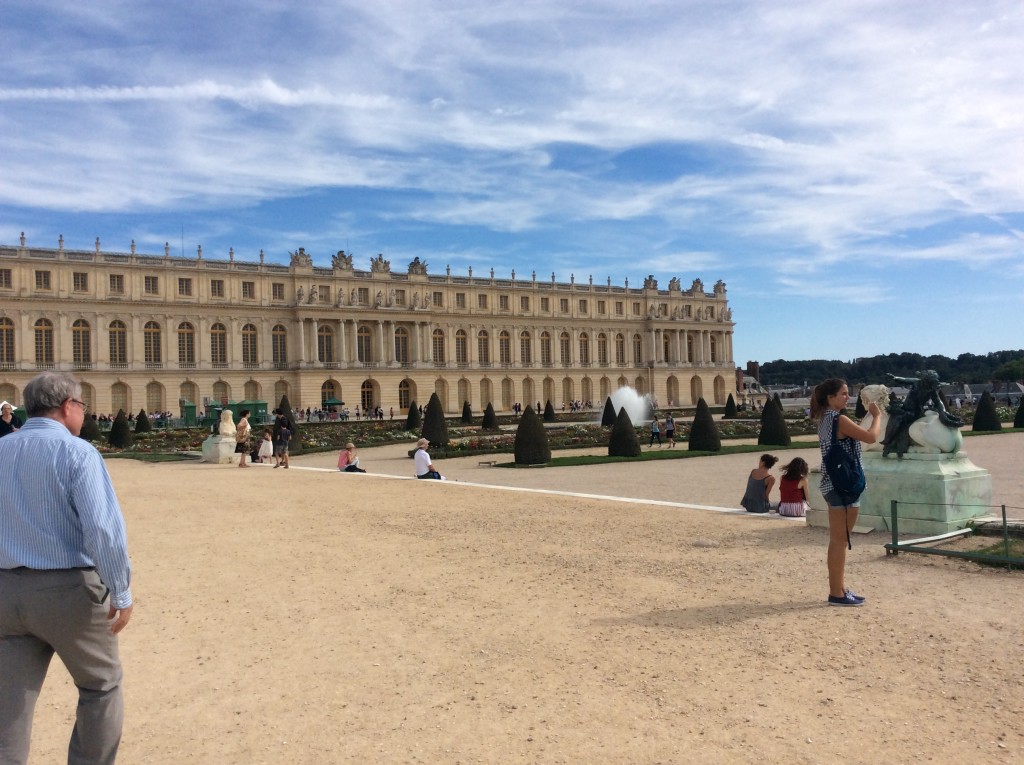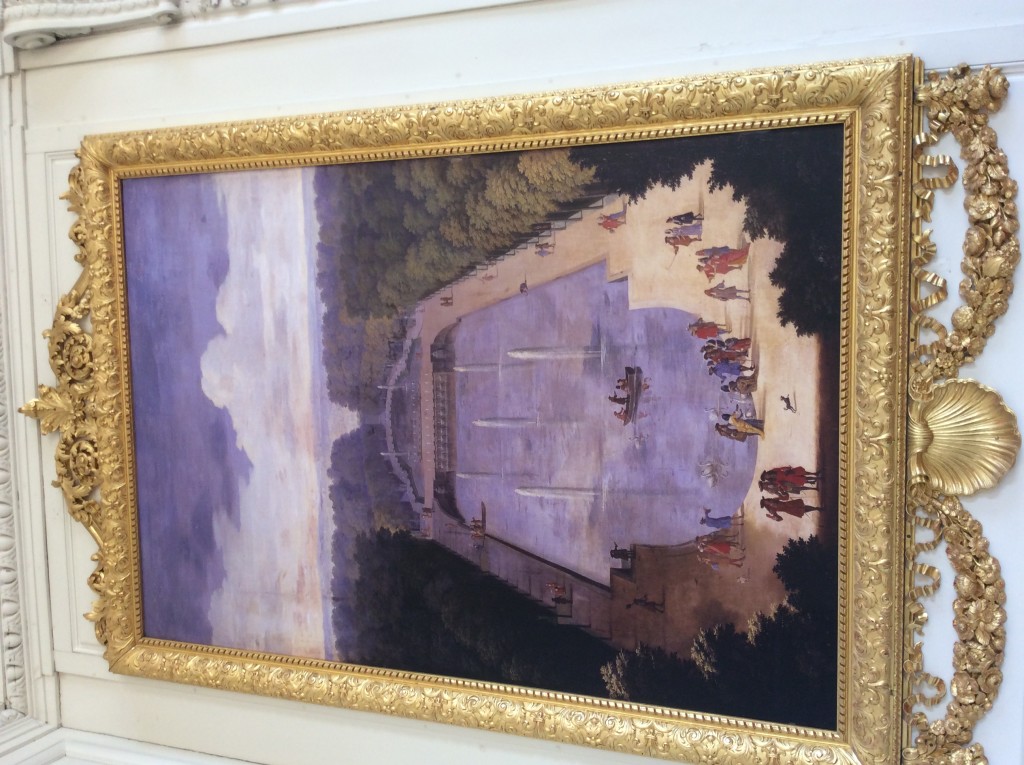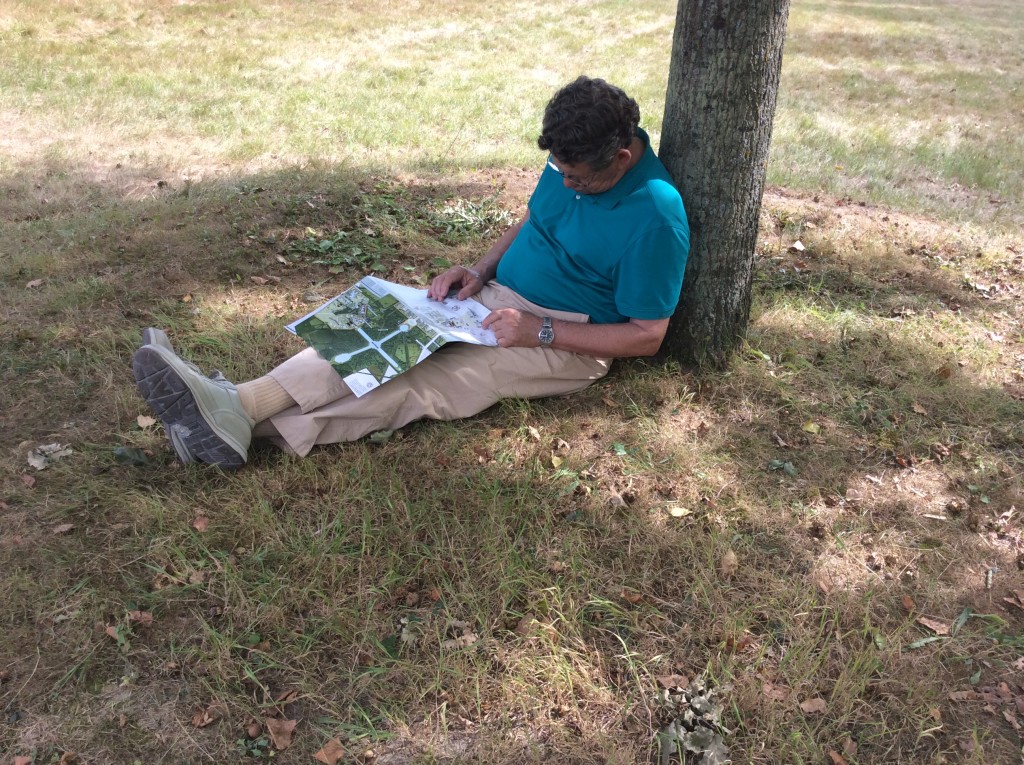ARRIVING VERSAILLES
Our cab ride to Versailles, a distance of about seven miles from Le Pecq, was quick and easy, getting us to the Chateau before the crowds. Clear skies and sunshine greeted us as we drove through the town.
Louis XIV was known as the “Sun King,” chosing the sun as his emblem, in reference to Apollo, the Greek god of peace and the arts. He became king at the age of 5. It was under his reign that the small palace or hunting lodge was transformed into the royal residence. It took 30 years to complete.
The site of Versailles was originally chosen, among other reasons, so Louis XIV could shelter his love affair with his mistress, Louise de La Vallière, one among many. Versailles became the official seat of Royal power May 6, 1682
The chateau was the kingdom’s political capital and the seat of the Royal court from 1682 until 1789 when revolutionaries massacred the palace guard. Louis XVI and Marie Antoinette were ultimately dragged back to Paris and guillotined. The chateau remained intact but most of the interior furnishings disappeared during the revolution.
As we waited for our tour of the king’s private apartment, we had the privilege of viewing the gardens early in the day before any of the tourists arrived.
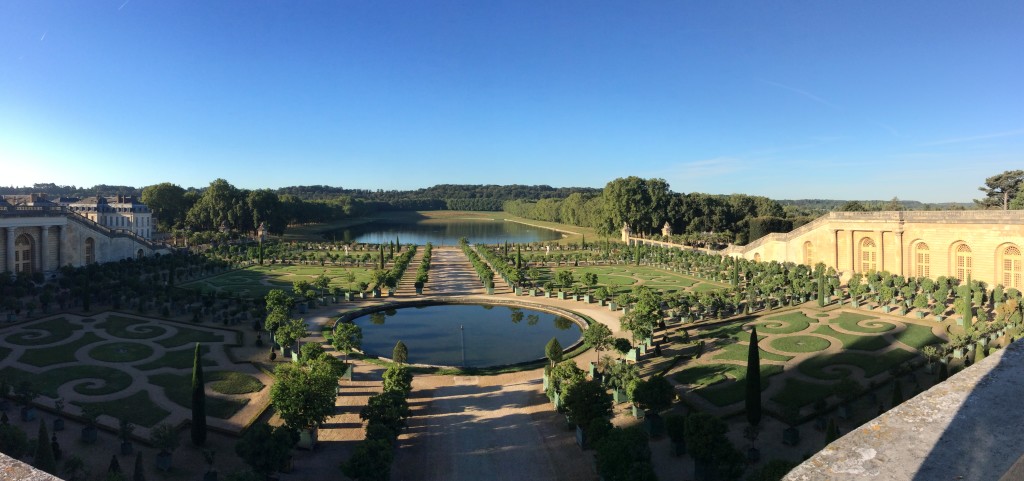
Overlooking one of the many gardens in morning dawn; considered the epitome of French formal gardens showcasing symmetry
The French countryside was peaceful and it was easy to imagine all the Kings courtiers in the gardens. Louis XIV’s court was 4000-strong and no expense was spared to employ the greatest artists and craftspeople of the day to create the most extravagant dormitory in history, surrounded by 800 hectares of gardens and lands (approximately 2,050 acres).
Known as the Marly machine, the largest hydraulic work of the era was undertaken under Louis XIV to supply Seine water to the numerous pools, fountains and waterfalls of the gardens of Versailles. Behind the Apollo Fountain stretched the Grand Canal providing a luminous vista, and was the setting for water festivals and boats sailing on it.
The King’s appartements shows how the king lived, worked, and played.
In his bedroom, the king slept, held ceremonies, had lunch (Petit convert dinner), with up to 150 courtiers and people invited from outside the court, watching (in the 18th century). By the 1780’s, the king’s life had become more private, but imagine having 150 people observing you as you arose, dressed, ate, and conducted your day.
The ceremony of dressing became a ritual during Louis XIV’s reign, where dressing, having your hair done and makeup applied was part of the act for the public to observe. Even the queen giving birth was on public display in the queen’s appartement for crowds of spectators to watch, ensuring the newborn’s legitimacy.
The Royal chapel at Versailles was the setting in 1770 for the wedding of the future King Louis XVI and Marie Antoinette.
The Royal schedule was as predictable as a Swiss watch, with the King in his bedchamber and the Queen in her bedchamber rousing at 8 am for the ceremony of the Petit Lever and the Grand Lever (the act of rising and dressing in public view).
The Royal procession was then lead through the hall of mirrors to the Royal chapel for morning mass and returned to the Council Chamber for late-morning meetings with ministers.
After lunch (referred to as Petit convert dinner served in the King’s bedroom), the king might ride or hunt or visit his library. Later he could join courtesans for an ‘appartement evening,’ extra work session or play billiards before supping at 10 pm (called Grand convert dinner). At 11:30 pm was the retiring ceremony (Coucher) — all done in public view.
THE GRAND TRIANON
After a lovely lunch break outside under the trellis in a cafe tucked away in the gardens, we walked from the main palace to the Grand Trianon. Built in 1687, the Grand Trianon is a small palace of pink marble. Built by Louis XIV to escape the pomp and ceremony of the court, the Grand Trianon was also the setting for Louis XIV’s love affair with Madame de Montespan.
A Royal mistress was called a favorite. Louis XIV’s favorites were Duchess de La Vallière, the Marquis de Montespan, and the Marquise de Maintenon.
Famed for its French formal gardens in geometrical patterns, the marble Trianon was surrounded by tens of thousands of hardy and tuberous plants. The plants were planted in pots that could be changed every day and thus create a colorful and scented spectacle.
Other famous occupants of the Grand Trianon were Napolean Bonaparte and his second wife Empress Marie Louise and King Louise-Philippe. General De Gaulle took on its restoration to host guests of the republic.
By this time, it was pretty hard to absorb much, but I do recall standing in front of a photo for a long time, thinking to myself the photo must represent more the actual affairs of men than all the grand, infamous lives of the king’s and the court that historians write about. Notice the look of concentration on the Ministere’s face — looks like hard work to me.
THE PETITE TRIANON
The Petite Trianon was built between 1762 and 1768 for the private use of Louis XV and and his favorite, Madame De Pompadour, again to escape the rigors of the court in privacy.
Looking fashionable “avoir bel air” was common at court
In 1774 Louis XVI gave the petite Trianon to Marie-Antoinette and it became her refuge. It is surrounded by English-style landscaped plants.
Eventually Marie-Antoinette began constructing the Queen’s Hamlet, a peasant village built around a lake with rustic workshops on the outskirts of her property. The hameau included a working farm that raised animals and grew crops.
After touring this last palace, we ran-walked back to the entrance to Versailles to catch our cab for home.
What a grand palace and accomplishment for Louis XIV, the Chateau de Versailles, with its gardens, palaces, fountains, grand canal, it’s royal court, courtiers, spies, military guards, servants, 2,300 rooms, 300 sculptures, 2000+ Windows. And the entertainment: celebrations, fireworks, theater, ballet, hunting, music, board games, games of chance, billiards, Jeu de paume, boating — no time for boredom. The Palace is a museum today dedicated to “all the glories of France.” On September 3, 1783, the Treaty of Versailles was signed here which establishes the independence of the United States of America. There were 7.7 million visitors to the Versailles Estate in 2014.
